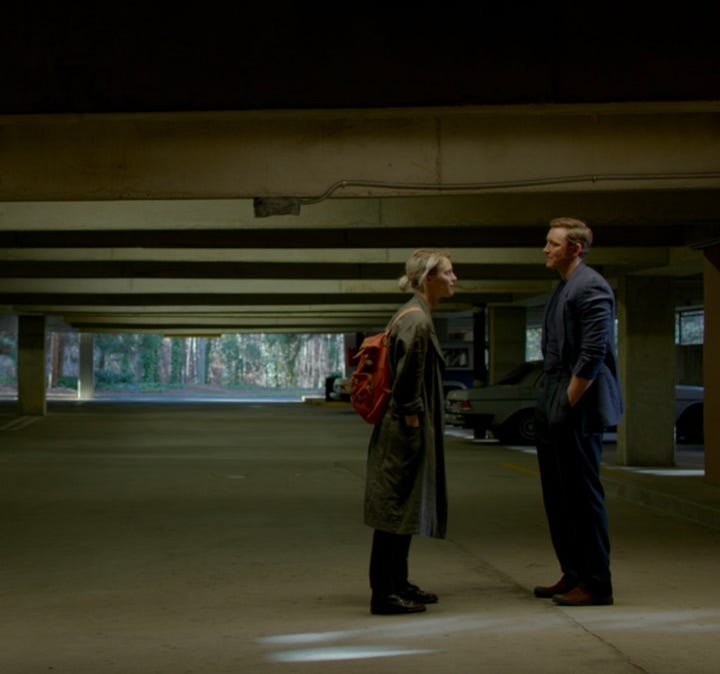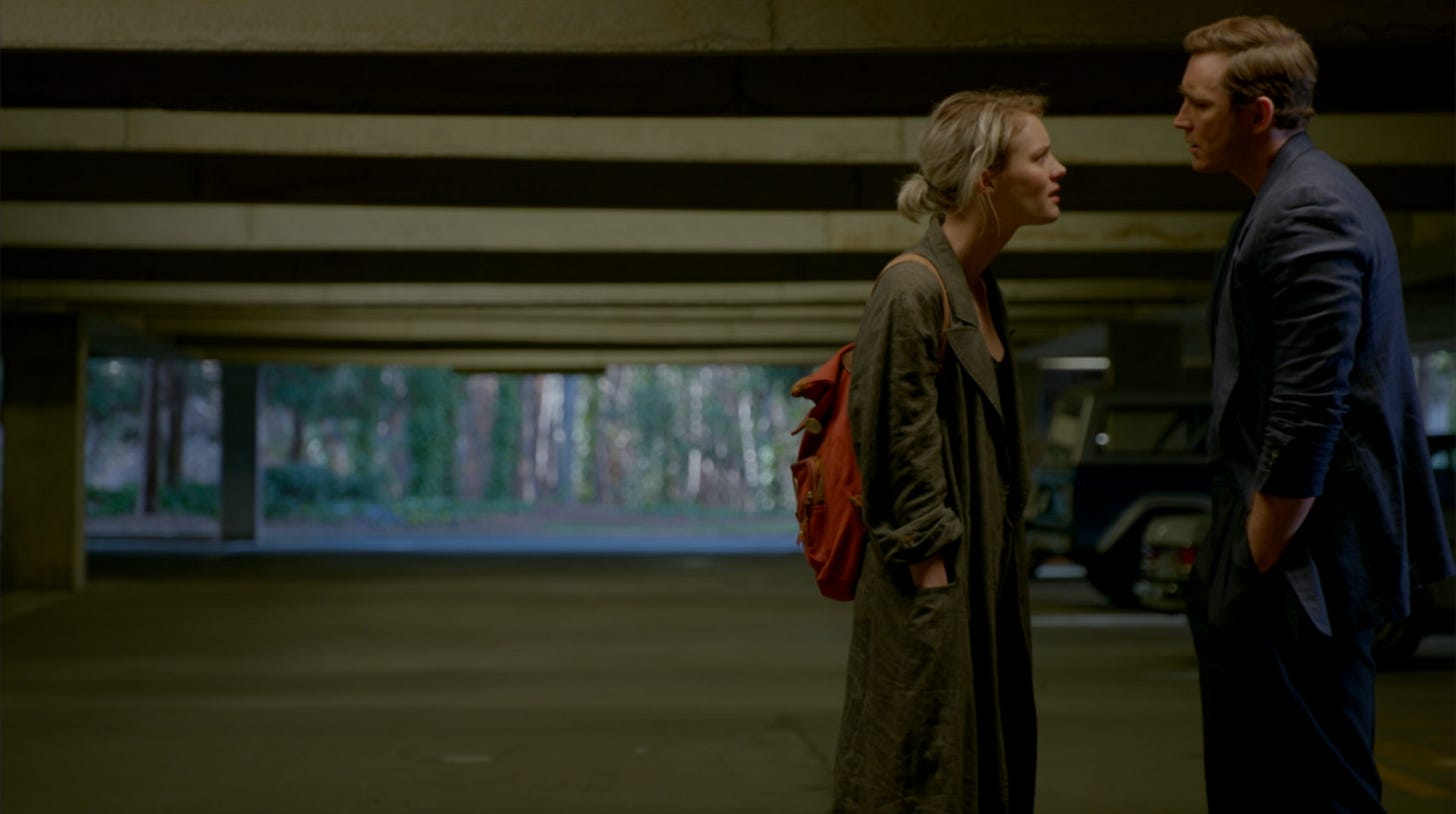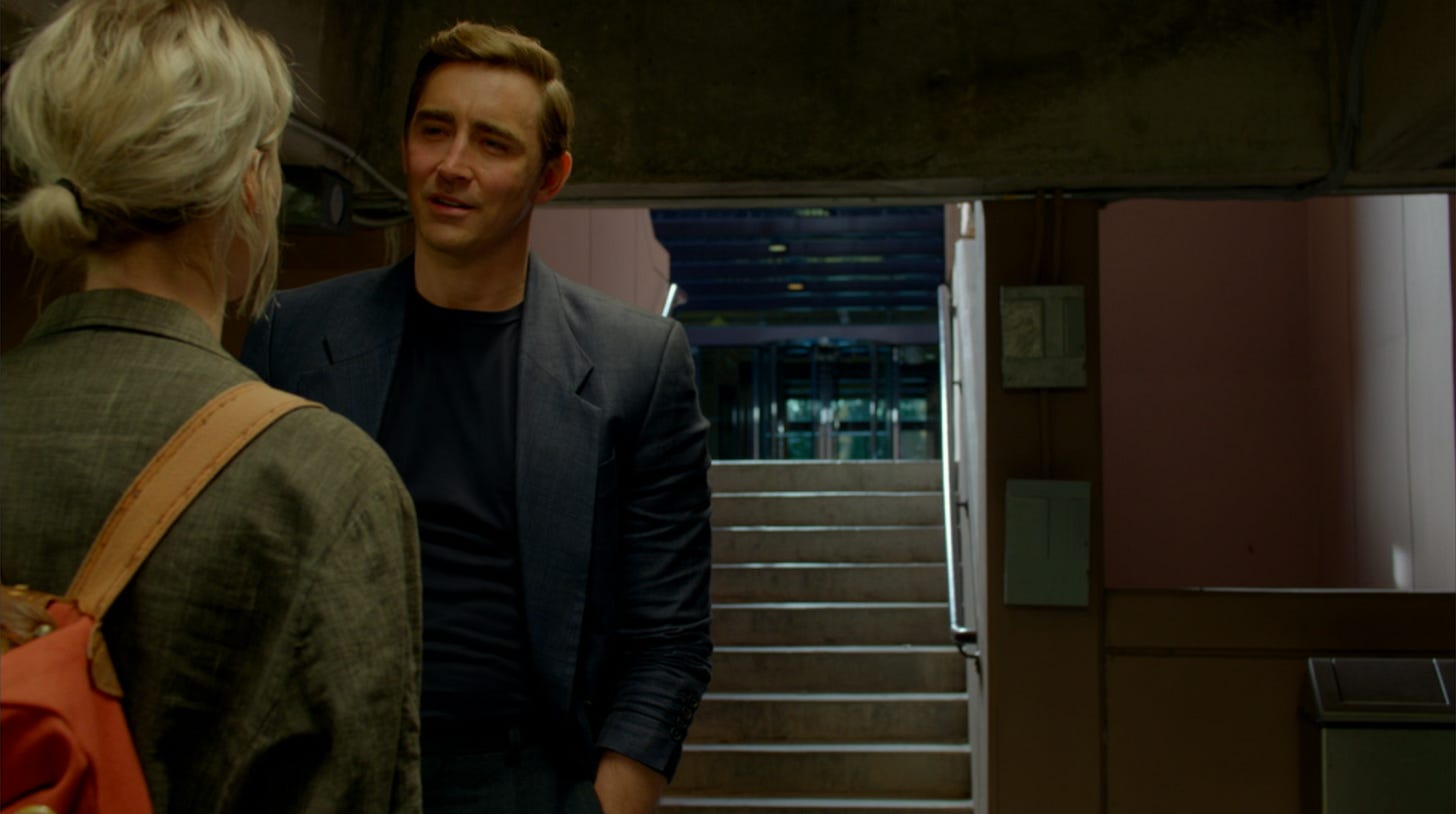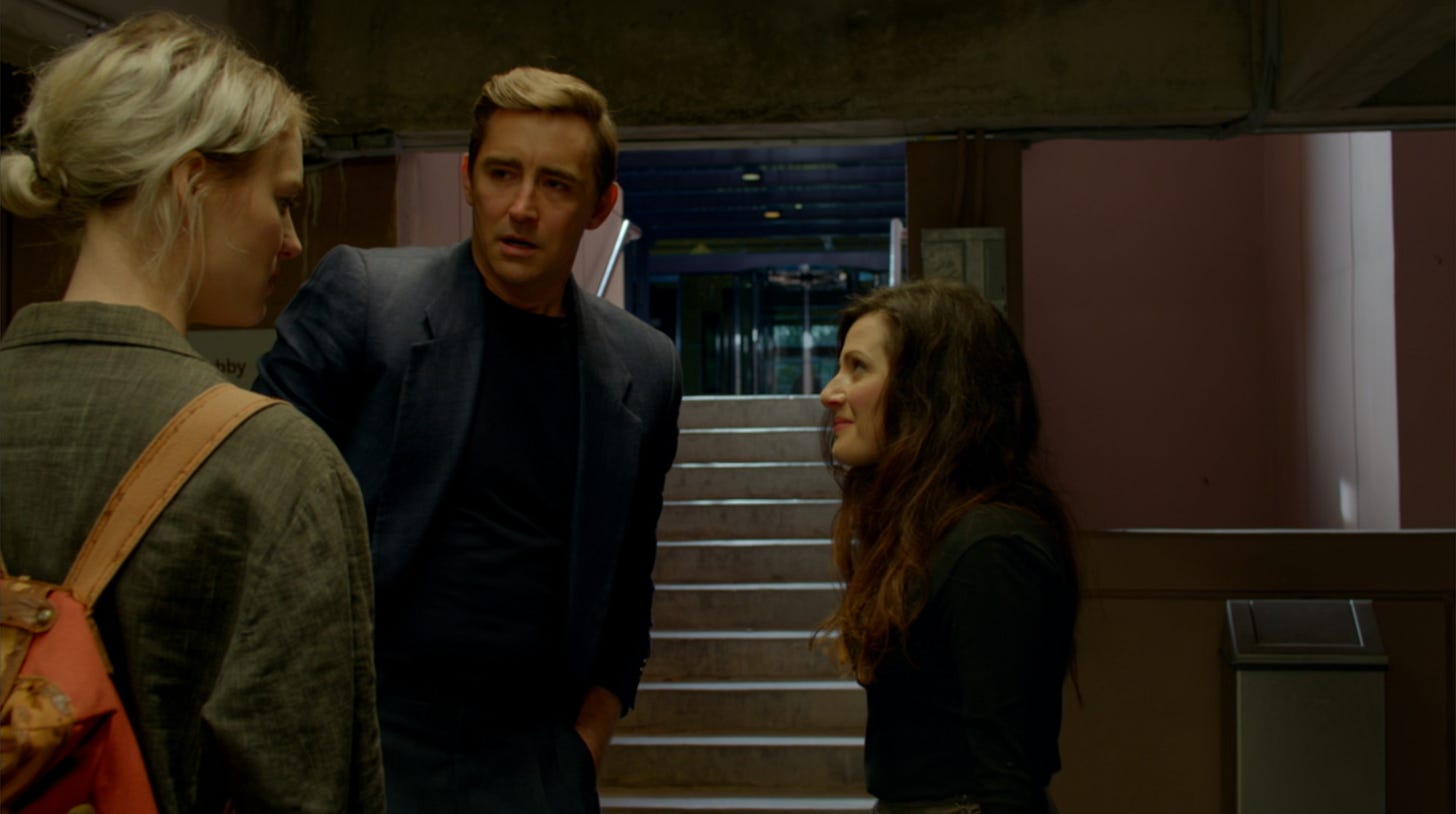Framing to Signify Character Relationships: HALT AND CATCH FIRE
how framing and blocking can show characters' feelings about each other
Today’s scene if from Halt and Catch Fire 2.05 "Extract and Defend" — Cameron (Mackenzie Davis) confronts Joe (Lee Pace) in that most handy of cinematic places: the parking garage.
A parking garage is Deep Throat’s prefered spot to meet Woodward, where we first see Batman in The Dark Knight, where Mike introduces himself to Pryce and a couple goons, where Tokyo Drift sets a redemption scene, and where hundreds of slashers go after their would-be victims (to varying results). Baby Driver jumped there. The Driver debuts there. Logan Echolls made his second White Knight stand there. Ethan Hunt staged a fantastic setpiece there.It’s a ubiquitous, cheap-to-rent, excuse-for-shifty-lighting, delightful bastard of a cinematic multitool.
For our purposes today, it’s a place ripe for symbolic staging which uses literal spacial relationship to signify inner thoughts and metaphorical relationships.
Distance as Metaphor
Joe chases Camera from their meeting into said garage, and immediately both stand as far apart as the frame will let them.
Having made up her mind to get this conversation / argument / showdown over with, Cameron stalks closer . . . closer . . .


Extreme Thirds
Now they’re together, they’re framed nearly on top of each other.
Cameron always to the left, Joe to the right.
When the camera is behind Cameron she’s far left, half off-screen. When the camera is behind Joe, he’s far right, half off-screen, in every shot size.
Among other things, this 'extreme third' framing keeps us focused clearly on the face of the person we're getting dialogue and reactions from.
The Third Party
So far, it's visually interesting, but other than the obvious closing of distance — getting closer and closer as the characters get more and more confrontational — it's not particularly telling us anything about their thoughts, desires, past or present relationship.
Then!
Sara, Joe's fiancée, arrives and deliberately steps between them.
The scene continues with the same angles and framing but added levels of meaning. The main players never move, only shift slightly. Yet it's wildly different; instead of close it feels crowded.
Sara's visible when we're on Joe's medium shot, because all Cameron sees is this obstacle between her and Joe.
But when it flips to Cameron's MS, Sara is almost wholly obscured. While she cannot be entirely ignored, all Joe (and the audience) really sees is Cameron.
In other words, the framing in the first half of the scene doesn't just work aesthetically on its own, it sets us up for the emotional payoff when Sara pushes between them.
Keeping the blocking static with Sara being the only thing that shifts — a seismic shift only figuratively — is more powerful than readjusting, it actually makes us notice even more.
Last, when Cameron walks away, she walks towards the open half (well, 2/3s) of frame, and as she fades out, Sara steps in to take the place she left vacant: visual representation of what literally happened between Season 1 and 2.
Halt and Catch Fire’s directors understand how framing give us insight into characters' mental and emotional states; where they are in relation to each other at any given moment.
Takeaways
The way we see characters in frame call tell us of their inner thoughts — if you have a scene where three or more characters are ‘playing nice’ while thinking nasty, of course dialogue and acting can carry subtext, but consider whether your framing can strengthen the undercurrents, and how the framing prior to the showdown can set you up for the real conflagration.
Shot Zero is written/edited by Mel Killingsworth & Stuart Willis and presented by Draft Zero. You can find us on Instagram, Twitter, Facebook and YouTube.
Additional Resources
For a fantastic piece on HACF's use of colour in the following episode, check out this from The A.V. Club.












